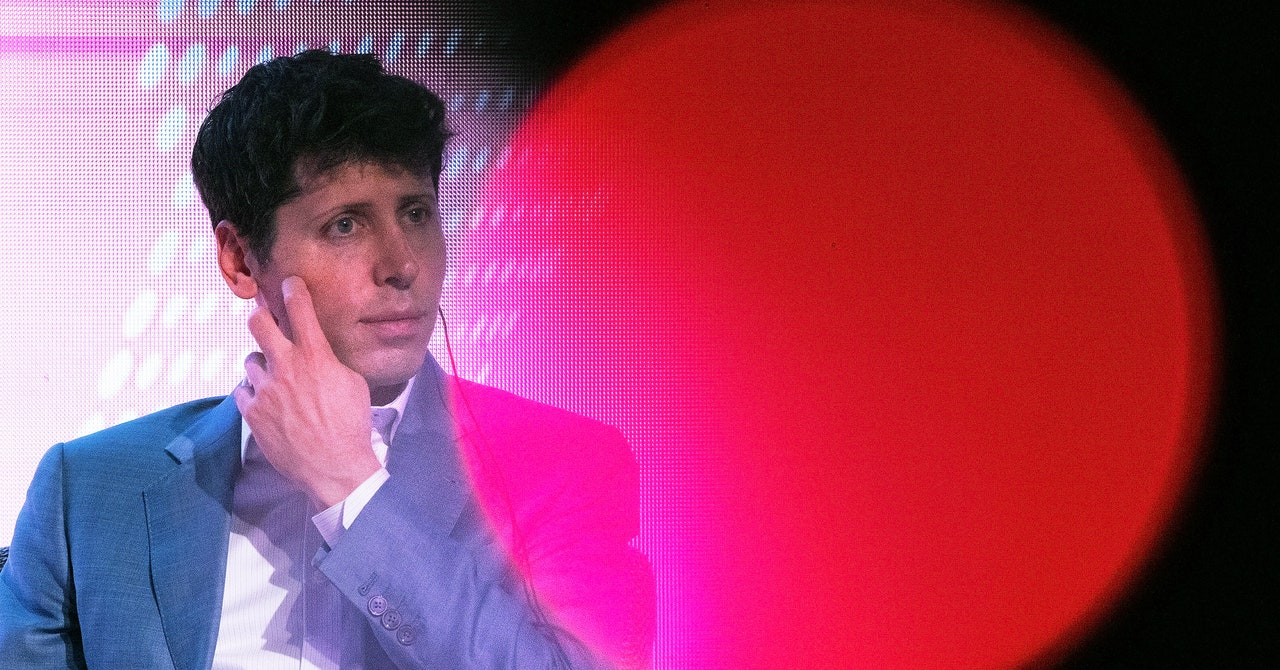
In June I had a conversation with chief scientist Ilya Sutskever at OpenAI’s headquarters, as I reported out WIRED’s October cover story. Among the topics we discussed was the unusual structure of the company.
OpenAI began as a nonprofit research lab whose mission was to develop artificial intelligence on par or beyond human level—termed artificial general intelligence or AGI—in a safe way. The company discovered a promising path in large language models that generate strikingly fluid text, but developing and implementing those models required huge amounts of computing infrastructure and mountains of cash. This led OpenAI to create a commercial entity to draw outside investors, and it netted a major partner: Microsoft. Virtually everyone in the company worked for this new for-profit arm. But limits were placed on the company’s commercial life. The profit delivered to investors was to be capped—for the first backers at 100 times what they put in—after which OpenAI would revert to a pure nonprofit. The whole shebang was governed by the original nonprofit’s board, which answered only to the goals of the original mission and maybe God.
Sutskever did not appreciate it when I joked that the bizarre org chart that mapped out this relationship looked like something a future GPT might come up with when prompted to design a tax dodge. “We are the only company in the world which has a capped profit structure,” he admonished me. “Here is the reason it makes sense: If you believe, like we do, that if we succeed really well, then these GPUs are going to take my job and your job and everyone’s jobs, it seems nice if that company would not make truly unlimited amounts of returns.” In the meantime, to make sure that the profit-seeking part of the company doesn’t shirk its commitment to making sure that the AI doesn’t get out of control, there’s that board, keeping an eye on things.
This would-be guardian of humanity is the same board that fired Sam Altman last Friday, saying that it no longer had confidence in the CEO because “he was not consistently candid in his communications with the board, hindering its ability to exercise its responsibilities.” No examples of that alleged behavior were provided, and almost no one at the company knew about the firing until just before it was publicly announced. Microsoft CEO Satya Nadella and other investors got no advance notice. The four directors, representing a majority of the six-person board, also kicked OpenAI president and chairman Greg Brockman off the board. Brockman quickly resigned.
After speaking to someone familiar with the board’s thinking, it appears to me that in firing Altman the directors believed they were executing their mission of making sure the company develops powerful AI safely—as was its sole reason for existing. Increasing profits or ChatGPT usage, maintaining workplace comity, and keeping Microsoft and other investors happy were not of their concern. In the view of directors Adam D’Angelo, Helen Toner, and Tasha McCauley—and Sutskever—Altman didn’t deal straight with them. Bottom line: The board no longer trusted Altman to pursue OpenAI’s mission. If the board can’t trust the CEO, how can it protect or even monitor progress on the mission?
I can’t say whether Altman’s conduct truly endangered OpenAI’s mission, but I do know this: The board seems to have missed the possibility that a poorly explained execution of a beloved and charismatic leader might harm that mission. The directors appear to have thought that they would give Altman his walking papers and unfussily slot in a replacement. Instead, the consequences were immediate and volcanic. Altman, already something of a cult hero, became even revered in this new narrative. He did little or nothing to dissuade the outcry that followed. To the board, Altman’s effort to reclaim his post, and the employee revolt of the past few days, is kind of a vindication that it was right to dismiss him. Clever Sam is still up to something! Meanwhile, all of Silicon Valley blew up, tarnishing OpenAI’s status, maybe permanently.
Altman’s fingerprints do not appear on the open letter released yesterday and signed by more than 95 percent of OpenAI’s roughly 770 employees that says the directors are “incapable of overseeing OpenAI.” It says that if the board members don’t reinstate Altman and resign, the workers who signed may quit and join a new advanced AI research division at Microsoft, formed by Altman and Brockman. This threat did not seem to dent the resolve of the directors, who apparently felt like they were being asked to negotiate with terrorists. Presumably one director feels differently—Sutskever, who now says he regrets his actions. His signature appears on the you-quit-or-we’ll-quit letter. Having apparently deleted his distrust of Altman, the two have been sending love notes to each other on X, the platform owned by another fellow OpenAI cofounder, now estranged from the project.






